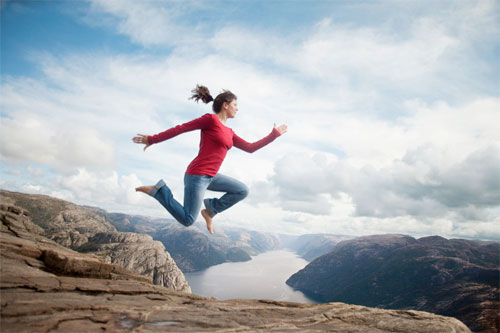I was born in a town called Orkanger on the north-west coast of Norway, the land of the northern lights and long winters. This is where I draw a lot of my inspiration from, with its incredibly dramatic scenery and landscapes, and fairytales I grew up with; stories of moody and mystical Nordic environments brimming with depictions of trolls, princesses and nature.
My connection with photography first blossomed in Rio de Janeiro, Brazil where I lived in the very early 1990’s. There, I learned Portuguese, encountered very passionate people and discovered my own passion for photography. A friend had found a producer to make her first CD, and I took pictures of her recording music with famous Brazilian artists in the studio. It was an incredible experience that compelled me to pursue photography, which eventually led me to San Francisco, a magnificent city to go to live and work. There, I got my Bachelors of Fine Arts and ventured out on my own to shoot.
In the past decade I have created images for clients such as Merck, Genentech, Reebok, The Times of London, Pasolivo, Gilead, Bristol-Myers Squibb, KQED TV., Yoga Journal, Vodafone, and Warner Bros, while my work has appeared in photo publications such as Communication Arts, PDN, Graphis, APA Shows, and Graphic Design USA. Currently I am located in San Francisco, CA, but once a year the northern winds call upon me and I go back home and visit Norway, to feel the breeze and see the midnight sun.
Artist Statement
I think artists in general have an innate appetite for life, and speaking for myself, I find that curiosity and passion drive me to explore and create, to be mesmerized by life and it’s constant flux of magical encounters, fears and achievements; my vehicle of expression is the art and craft of photography. In this process I aim to intimately connect the subject and me and ultimately the viewer to a dialogue and to linger, to inspire and to create, and to preserve intense moments of emotion and beauty and mystery.
What I strive for in an image is to get genuine emotion and expressions from the subject. Sometimes it happens very naturally, and sometimes it is a real challenge to put a person at ease, to make them feel comfortable and enjoy having a camera pointed at them. It is a sensitive moment I share with my subjects while photographing, and establishing a connection with the talent is very important in order to capture striking images, and I work hard to make them comfortable and excited so they give their best. With great collaborations everyone wins and walks away with a sense of achievement.
Photography gives my life a purpose and a meaning, to further explore and discover myself, the arts and science, and our mysterious existence.
